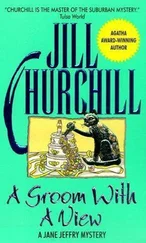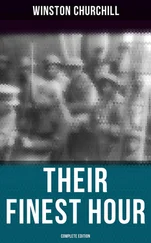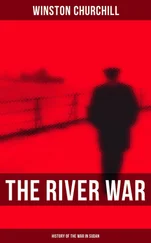Winston Churchill - Ian Hamilton's March
Здесь есть возможность читать онлайн «Winston Churchill - Ian Hamilton's March» весь текст электронной книги совершенно бесплатно (целиком полную версию без сокращений). В некоторых случаях можно слушать аудио, скачать через торрент в формате fb2 и присутствует краткое содержание. Год выпуска: 2018, Издательство: epubBooks Classics, Жанр: История, Прочая документальная литература, на английском языке. Описание произведения, (предисловие) а так же отзывы посетителей доступны на портале библиотеки ЛибКат.
- Название:Ian Hamilton's March
- Автор:
- Издательство:epubBooks Classics
- Жанр:
- Год:2018
- ISBN:нет данных
- Рейтинг книги:4 / 5. Голосов: 1
-
Избранное:Добавить в избранное
- Отзывы:
-
Ваша оценка:
- 80
- 1
- 2
- 3
- 4
- 5
Ian Hamilton's March: краткое содержание, описание и аннотация
Предлагаем к чтению аннотацию, описание, краткое содержание или предисловие (зависит от того, что написал сам автор книги «Ian Hamilton's March»). Если вы не нашли необходимую информацию о книге — напишите в комментариях, мы постараемся отыскать её.
London to Ladysmith
Ian Hamilton's March — читать онлайн бесплатно полную книгу (весь текст) целиком
Ниже представлен текст книги, разбитый по страницам. Система сохранения места последней прочитанной страницы, позволяет с удобством читать онлайн бесплатно книгу «Ian Hamilton's March», без необходимости каждый раз заново искать на чём Вы остановились. Поставьте закладку, и сможете в любой момент перейти на страницу, на которой закончили чтение.
Интервал:
Закладка:
The successes gained in the Free State by the redoubtable Christian De Wet, and the cutting of the communications near Rhenoster, awoke everyone to the fact that further exertions were required. Though the Boers under Botha had made but a poor resistance in front of their capital, they were encouraged by the news from the Free State to adopt a more defiant attitude, and to make what we hope has been almost a final effort. As to that I will not be sanguine; but it is certain that, whereas on the 7th and 8th of June the Boer leaders in the Transvaal were contemplating surrender, on the 9th and 10th they were making all kinds of bold schemes to harass and even entrap the British army.
On the 7th the news ran through the camp that Mrs. Botha had come through the lines with some mission on her husband's behalf, and General Schoeman had himself made very decided overtures. On the 8th, therefore, an armistice was observed by both sides, and a conference on Zwartskop, where Lord Roberts was to meet the Republican generals, was arranged for the 9th; but when the 9th came circumstances had changed. The Field–Marshal had actually his foot in the stirrup ready to ride to the meeting–place, when a messenger arrived from Botha declining, unless Lord Roberts had some new proposal to make, to enter into any negotiations. The consequence of this was an immediate resumption of active operations.
The military situation was, briefly, that Lord Roberts's army was spread around and in Pretoria in various convenient camping grounds, with the greater part of its force displayed on the east and north–east sides of the town; and that the Boers, under Botha and Delarey, to the number of about 7,000, with twenty–five guns, held a strong position some fifteen miles to the east astride the Delagoa Bay Railway. It was evident that on any grounds, whether moral or material, it was not possible for the conquering army to allow the capital to be perpetually threatened by the enemy in organised force, and, indeed, to be in a state of semi–siege.
With the intention, therefore, of driving the enemy from the neighbourhood, and in the hope of capturing guns and prisoners, a large series of combined operations was begun. Practically all the available troops were to be employed. But the army which had marched from Bloemfontein had dwindled seriously from sickness, from casualties, and, above all, from the necessity of dropping brigades and battalions behind it to maintain the communications. We have already seen how it was necessary to leave the Fourteenth Brigade to hold Johannesburg, and now the Eighteenth Brigade became perforce the garrison of Pretoria, thus leaving only the Eleventh Division, the corps troops, and Ian Hamilton's force free for field operations.
The Eleventh Division numbered, perhaps, 6,000 bayonets with twenty guns. Ian Hamilton's force had lost Smith–Dorrien's Brigade, which was disposed along the line between Kroonstadt and Pretoria, and though strengthened by the addition of Gordon's Cavalry Brigade did not number more than 3,000 bayonets, 1,000 sabres, and 2,000 rifle–armed Cavalry, with thirty guns. But the shrinkage had been greatest among the mounted troops. French's command of a Cavalry Division, which should have been some 6,000 mounted men, was scarcely, even with part of Hutton's Brigade of Mounted Infantry, 2,000. The two Cavalry Brigades with Ian Hamilton mustered together only 1,100 men, and Ridley's Mounted Infantry, whose nominal strength was at least 4,000, was scarcely half that number in actuality. Brigades, therefore, were scarcely as strong as regiments, regiments only a little stronger than squadrons, and the pitiful—absurd if it had not been so serious—spectacle of troops of eight and ten men was everywhere to be seen. It must, therefore, be remembered that though the imposing names of divisions and brigades might seem to indicate a great and powerful force, the army at Lord Roberts's disposal was really a very small one.
The enemy's position ran along a high line of steep and often precipitous hills, which extend north and south athwart the Delagoa Bay line about fifteen miles east from Pretoria, and stretch away indefinitely on either side. The plan of the Field–Marshal was to turn both flanks with Cavalry forces, and to endeavour to cut the line behind the Boers, so that, threatened by the attack of the Infantry in front, and their retreat compromised, they would have to fall back, probably without being able to save some, at least, of their heavy guns.
French was directed to make a wide sweep round the enemy's right flank north of the railway. Pole–Carew, with the Eighteenth Brigade and the Guards, was to advance frontally along the railway; Ian Hamilton to move parallel to him about six miles further south; and Broadwood, who, with the rest of the mounted troops, formed part of Hamilton's force, was to endeavour to turn the enemy's left. It was felt that, important as were the objects to be gained, they scarcely justified a very large sacrifice of life. But though the Field–Marshal would be content with the retreat of the enemy, both Cavalry forces were intended to press hard inward.
On the 11th, the whole army was in motion. French on the extreme left of the British front, which was extended from flank to flank about sixteen miles, soon came in contact with the Boers, occupying strong defensive positions, and he became sharply engaged. During the day he continued to persevere, but it was not until nightfall that he was able to make any progress. Pole–Carew, with the Eleventh Division, moved eastward along the railway, extended in battle formation, and engaged the enemy with his long–range guns, to which the Boers replied with corresponding pieces, including a 6–in. gun mounted on a railway truck. Though an intermittent bombardment continued throughout the day, the operations in the centre were confined to a demonstration.
Meanwhile Broadwood and Ian Hamilton, advancing on the right, found that the Boers, besides occupying the whole line of the Diamond Hill plateau, had also extended their left flank, which was composed of the Heidelburg commando and other South Transvaal burghers, far beyond the reach of any turning movement, and for this reason the operations to the British right and right centre became of a piercing rather than of an enveloping nature. Hamilton endeavoured to hold off the enemy's unduly extended left by detaching a battalion, two field guns, and Gordon's Cavalry Brigade with its horse battery, in the direction of the Tigerspoorte ridges. Ridley's Brigade of Mounted Infantry curved inwards towards the railway, and while these two forces struck out, like the arms of a swimmer, Broadwood's Brigade was intended to push through the gap thus made.
A dropping musketry and artillery fire began shortly after eight o'clock along the front of the force engaged in containing the Boers near Tigerspoorte, and half an hour later Ridley's Brigade was engaged along the southern slopes of Diamond Hill. Meanwhile, Broadwood was advancing steadily to the eastward, and crossing a difficult spruit debouched into a wide, smooth, grass plain, surrounded by hills of varying height, at the eastern end of which was a narrow gap. Through this the line of march to the railway lay. He became immediately engaged with the Boers round the whole three–quarters of the circle, and a scattered action, presenting to a distant observer no picturesque features, and yet abounding in striking incidents, began. The Boers brought seven guns, so far as we could observe, against him, and since the fire of these pieces was of a converging nature, the Cavalry was soon exposed to a heavy bombardment.
In spite of this, Broadwood continued to push on. The country was well suited for Cavalry action, and the gap, or 'poorte,' as it is called in this country, plainly visible among the hills to the eastward, encouraged him to try to break through. Accordingly, at about eleven o'clock, he brought two horse–guns, under Lieutenant Conolly, [6] A younger brother of that brilliant officer of the Scots Greys, whose death at Nitral Nek a few weeks later was so great a loss to his friends, his regiment, and his country.
into a very forward position, with the design of clearing his road by their fire. The Boers, however, fought with a stubbornness and dash which had long been absent from their tactics. They were in this part of the field largely composed of Germans and other foreigners, of colonial rebels, and of various types of irreconcilables.
Интервал:
Закладка:
Похожие книги на «Ian Hamilton's March»
Представляем Вашему вниманию похожие книги на «Ian Hamilton's March» списком для выбора. Мы отобрали схожую по названию и смыслу литературу в надежде предоставить читателям больше вариантов отыскать новые, интересные, ещё непрочитанные произведения.
Обсуждение, отзывы о книге «Ian Hamilton's March» и просто собственные мнения читателей. Оставьте ваши комментарии, напишите, что Вы думаете о произведении, его смысле или главных героях. Укажите что конкретно понравилось, а что нет, и почему Вы так считаете.











